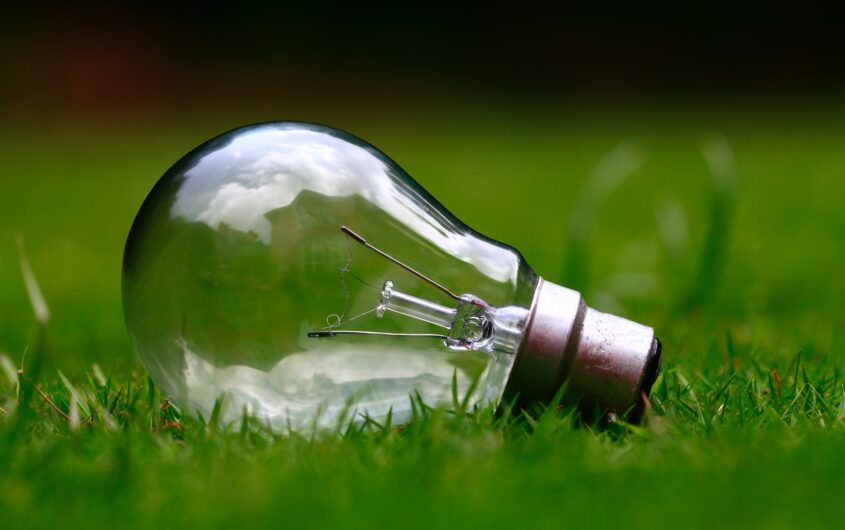
Ashes Sitoula via Unsplash
One Year of the IRA

Emma Levi
Halle Foundation/AGI Intern
Emma Levi is a research intern at AGI for the summer of 2023. She provides research support to AGI’s programs, monitors the media, and assists with AGI’s programs, events, and databases.
Emma is currently pursuing a bachelor’s degree in Political Science and German from the University of California, Berkeley. She is passionate about transatlantic exchange and dialogue, specifically between the EU and the United States. Emma has completed coursework on topics such as European identity and democracy, as well as German history and politics. Previously, she studied abroad at the Humboldt University in Berlin in Summer 2022. At Berkeley, Emma is a research assistant for the Institute of European Studies and has held previous internships for both European startups and nonprofits.
Assessing the Impact on Europe’s Clean Energy Industry
A U.S. Climate Action Milestone
The Inflation Reduction Act (IRA) has been hailed by many as the most “important climate action in U.S. History.” This landmark piece of legislation funnels almost $400 billion in federal funding toward clean energy efforts through a set of lucrative subsidies, tax incentives, and grants. These IRA provisions stem from a widespread consensus in Washington that reinvigorating U.S. manufacturing will hinge on substantial federal investment in the development and purchase of domestic green energy products. In the case of hydrogen, the subsidies the IRA provides—such as a $3/kg tax credit and 10-year manufacturing credits for products—are expected to halve the cost of fuel production.
August 16th marks one year since the IRA’s passage. However, the past twelve months have been tumultuous in terms of transatlantic alignment on green energy incentives, as the IRA sparked numerous disagreements between the EU and the United States over whether it unfairly advantaged U.S. clean energy firms. As the dust settles, what have the consequences actually been for Europe? How has the implementation of the IRA affected Germany’s cherished status as a frontrunner in green hydrogen production?
European Clean Energy Firms Pivot Across the Atlantic
The IRA’s attractive subsidies have already prompted some European manufacturers to shift their production across the Atlantic. Nel Hydrogen, a Norwegian company that develops electrolyzers for hydrogen production, announced on May 3rd that it would be building a new factory in Michigan. Earlier, the Luxembourg-based electric vehicle battery firm FREYR Battery set a precedent in late 2022 by revealing its intention to build a manufacturing plant just south of Atlanta.
Such decisive moves by European companies signify a growing temptation to shift their operations to the U.S. market and capitalize on the benefits offered by the IRA. Both manufacturing plants are expected to create a combined total of 1,224 new jobs in the United States. This pattern emerges amidst the European Union’s efforts to position itself as the obvious destination for investments in clean technology. Aaron Brickman, Senior Principal at the sustainability research and consulting nonprofit RMI,[1] credits the IRA for “changing the game in several ways […]. There is clearly a surge in interest for global companies to set up shop or expand existing operations, including a lot of European-headquartered companies.” While none of the current examples are German-based, Brickman believes it still warrants scrutiny as a potential harbinger of a larger trend: “The decision for companies is no longer IF they are going to engage with U.S. clean-tech opportunities but HOW.” This sense of urgency was compounded when Swiss solar cell maker Meyer Burger threatened to build a new solar cell factory in the United States rather than continue a planned expansion of a plant in Germany, praising the IRA’s incentives.
Germany Expands Ambition in New Hydrogen Strategy
In an effort to counteract the negative consequences of the IRA in Europe, the EU launched the Green Deal Industrial Plan and Net Zero Industry Act in early 2023. These Acts offered similar incentives to bridge the cost gap and keep these industries on EU territory, such as $272 billion dedicated to the green transition.
As the so-called “beating heart of Europe,” it should come as no surprise that Germany has made some moves of its own. German officials, led by Vice Chancellor and Minister for Economic Affairs and Climate Action Robert Habeck (Green Party), embarked on a diplomatic campaign to court Europe’s few homegrown battery companies. During a visit in February, Habeck personally lobbied Northvolt to proceed with its plan of establishing a factory near Hamburg, Germany. Northvolt had previously considered investing in the United States but ultimately chose Germany after the EU bolstered its subsidies.
When it comes to fighting global climate change, the additional spending from this subsidy war may well be a wise investment that could save billions in the long run.
Germany’s newly-updated National Hydrogen Strategy (NHS) will also play a pivotal role in advancing the country’s clean energy aspirations. By significantly elevating hydrogen targets and devising a new strategy for hydrogen imports, the German mantra is clear: “Ziel ist die Marktführerschaft in einem ganz neu entstehenden Markt”: the goal is market leadership in a new emerging market. Minister of Education and Research Bettina Stark-Watzinger (Free Democratic Party) says that she envisions a “quick market ramp-up” which will no doubt be necessary to meet the significantly increased NHS hydrogen electrolyzer target of 10 GW by 2030.
Healthy Competition?
While the initial European reaction was to perceive the IRA as “a declaration of war,” the act can also be viewed as a much-needed call to action for Europe. The new EU and German subsidies for green technology represent a major step forward on two pressing issues: reducing supply chain dependence and decarbonizing the global economy. Aaron Brickman echoes this sentiment, arguing that “the situation is such where the IRA has created a race to the top, pushing each other collectively higher. I think this is a really positive outcome.” Transatlantic competition over the green technology market could therefore be crucial to ensuring that the United States and Europe achieve their carbon-neutral goals. When it comes to fighting global climate change, the additional spending from this subsidy war may well be a wise investment that could save billions in the long run.
However, skeptics caution that this war of subsidies could prove costly, damaging to international trade, and ill-suited for all but the wealthiest nations. Addressing these concerns requires exploring potential international agreements that regulate domestic favoritism in the form of subsidies. Implementing restrictions or time limits for subsidies is one proposed solution. Setting thresholds for domestic hydrogen production and phasing out subsidies for new plants upon reaching that threshold could be one way to encourage progress while limiting unsustainable competition.
In its inaugural year, the IRA has emerged as a polarizing yet inspiring initiative, with promising long-term prospects. While it has definitely triggered a noticeable shift in investment toward the United States, Germany’s determined countermeasures have safeguarded its position in the green technology landscape. As we move forward, the impact of this development on U.S.-European relations remains to be seen. Only time will tell if the friction it has caused can be harnessed constructively, leading to mutual appreciation of the IRA’s positive contribution to global sustainability efforts.
[1] Author phone interview, August 1, 2023.







